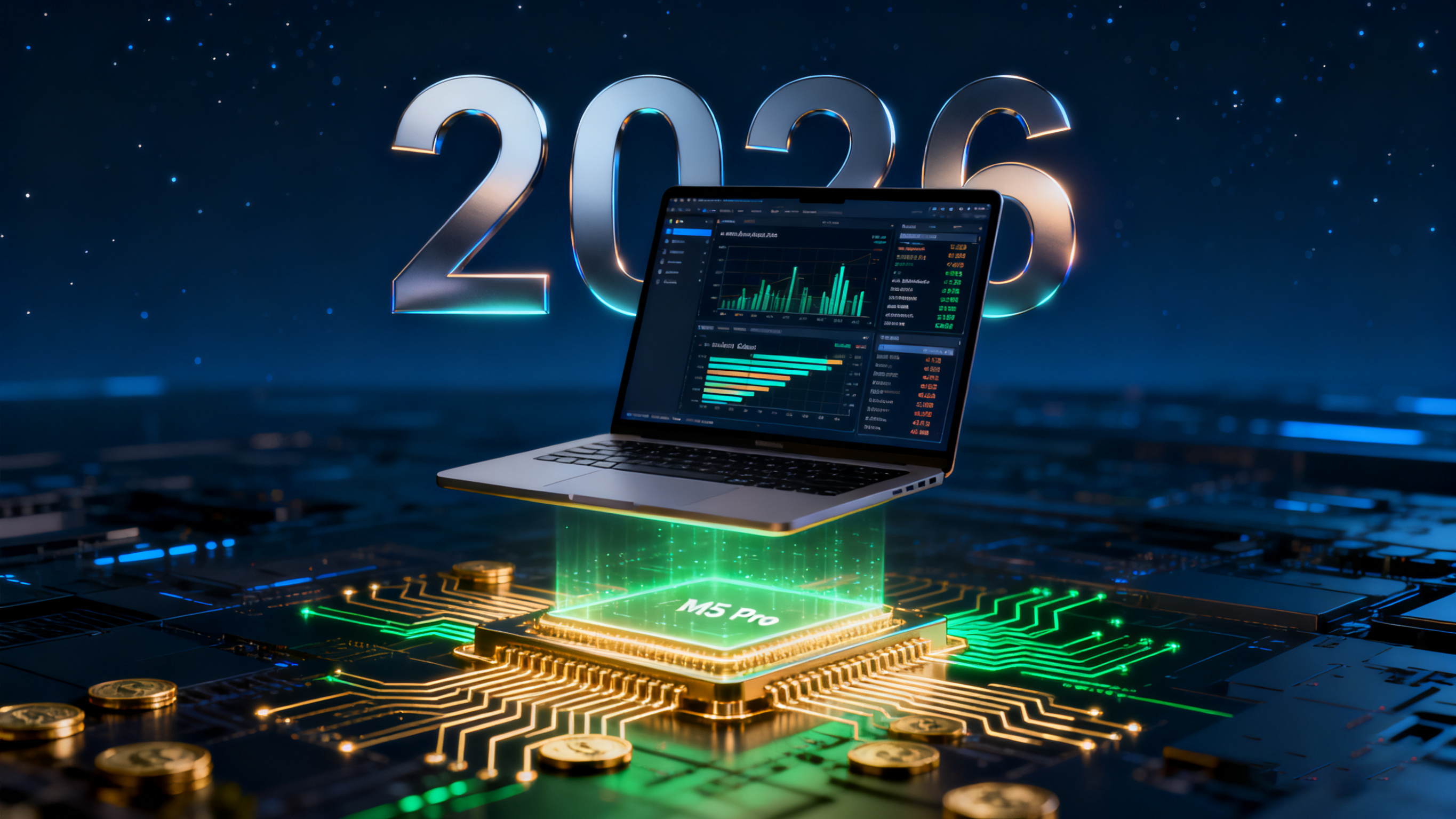Apple Inc. recently released an official teaser, hinting at the upcoming arrival of a new generation M5 chip. On October 14th, Apple’s marketing chief Greg Joswiak posted a striking teaser animation on social media, showing the silhouette of a MacBook Pro accompanied by the words “Coming Soon.”
The “V” shape in the teaser corresponds to the Roman numeral “5,” while the caption “Mmmmm” hints at the arrival of the new generation M5 chip. According to market rumors, the 14-inch MacBook Pro equipped with the M5 chip is expected to receive its first update this week, undoubtedly bringing new anticipation to eager consumers.

M5 Chip: Key to Performance Enhancement
The focus of this MacBook Pro upgrade lies in its core processor. The new 14-inch MacBook Pro is expected to be equipped with the M5 chip, while no major changes are anticipated in its exterior design. This upgrade to the M5 chip is expected to bring significant improvements in both CPU and GPU performance, thereby enhancing overall operational speed and graphics processing capabilities. For users who frequently handle high-load tasks such as video editing and graphic design, the performance boost from the M5 chip will be crucial. Although specific technical specifications have not yet been announced, considering Apple’s leading position in the chip industry field, we have reason to believe that the M5 chip will be a high-performance chip with excellent power consumption control. It is expected that the M5 chip will adopt a more advanced manufacturing process, leading to improvements in energy efficiency as well. Apple typically details key performance metrics such as CPU, GPU, and Neural Engine after the chip’s official announcement. At that time, we will be able to gain a more comprehensive understanding of the M5 chip’s specific performance.
High-End Models Might See Delayed Release
According to the latest news, it is worth noting that high-end models equipped with the M5 Pro and M5 Max chips might not be launched until 2026. This means that users seeking the ultimate performance might need to wait a while longer. The M5 Pro and M5 Max chips usually offer more powerful CPU core counts, GPU core counts, and greater memory bandwidth to meet the higher performance demands of professional users. In its chip product lineup strategy, Apple typically adopts a gradual approach, releasing the standard version first, followed by the Pro and Max versions to cover a broader user base. This strategy helps Apple better control costs and adjust product strategies promptly based on market feedback. With the release of the M5 chip, the competitiveness of Apple’s MacBook Pro lineup will be further enhanced, continuing to solidify its leading position in the high-end laptop market.

Market Competition and Future Outlook
Apple’s continuous investment in the chip domain is also driving technological progress across the industry. With the launch of the M5 chip, competitors like Intel and AMD are bound to accelerate their product iteration pace, introducing more competitive chip products. In the future, the laptop market will witness even more intense competition. The success of Apple’s M-series chips also provides a reference for other manufacturers. With the development of AI technology, future laptop chips might place greater emphasis on AI computing power, thereby offering users a smarter and more convenient experience.
Based on the development of AI technology, future laptop chips might place greater emphasis on AI computing power, thereby offering users a smarter and more convenient experience. The integration of dedicated neural engines in Apple’s M-series chips has already demonstrated significant advantages in tasks like real-time video processing and voice recognition. With the M5 chip, we can expect further breakthroughs in on-device AI capabilities, potentially enabling more complex machine learning tasks to be handled locally without relying on cloud servers. This not only enhances processing speed but also better protects user privacy. The competition in AI chip performance is becoming a new battleground for laptop manufacturers beyond traditional CPU and GPU metrics.
Looking further ahead, the evolution of laptop chips will increasingly focus on human-computer interaction paradigms. The powerful AI capabilities of chips like the M5 could drive revolutionary changes in how we interact with computers – through more natural voice commands, gesture control, and even predictive behavior analysis. We might witness the emergence of context-aware systems that proactively provide necessary information and services based on user behavior patterns and environmental cues. Additionally, as augmented reality applications become more prevalent, the demand for chips that can seamlessly handle both virtual and real-world data processing will grow significantly, potentially making AR-ready performance a standard expectation for future laptop chips.












